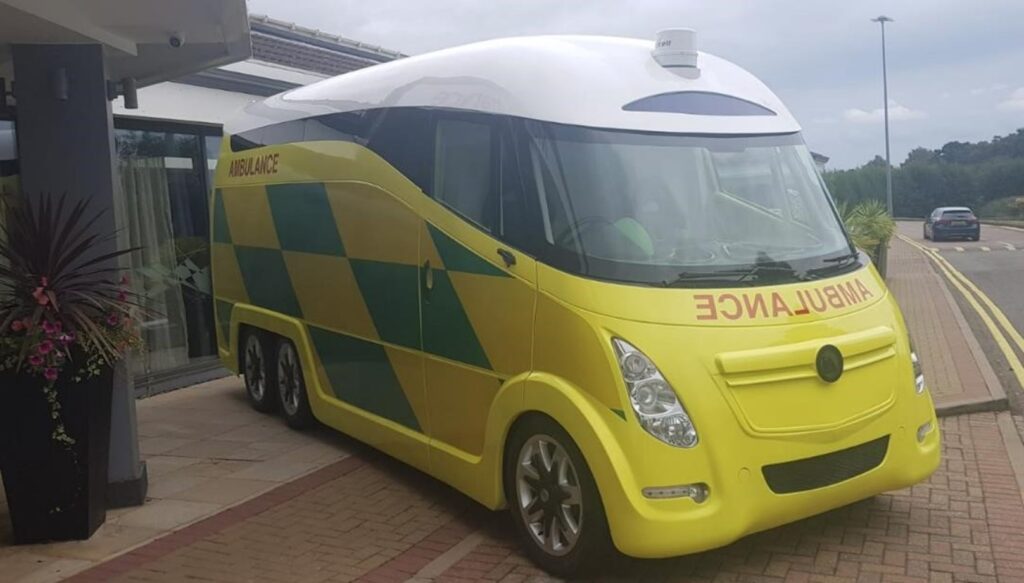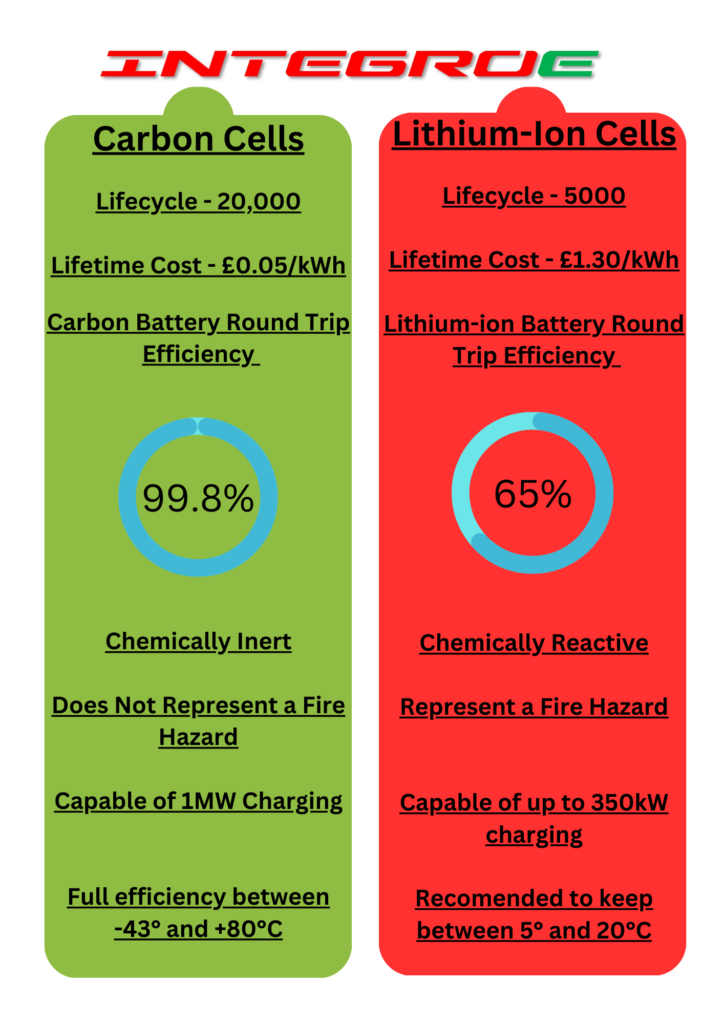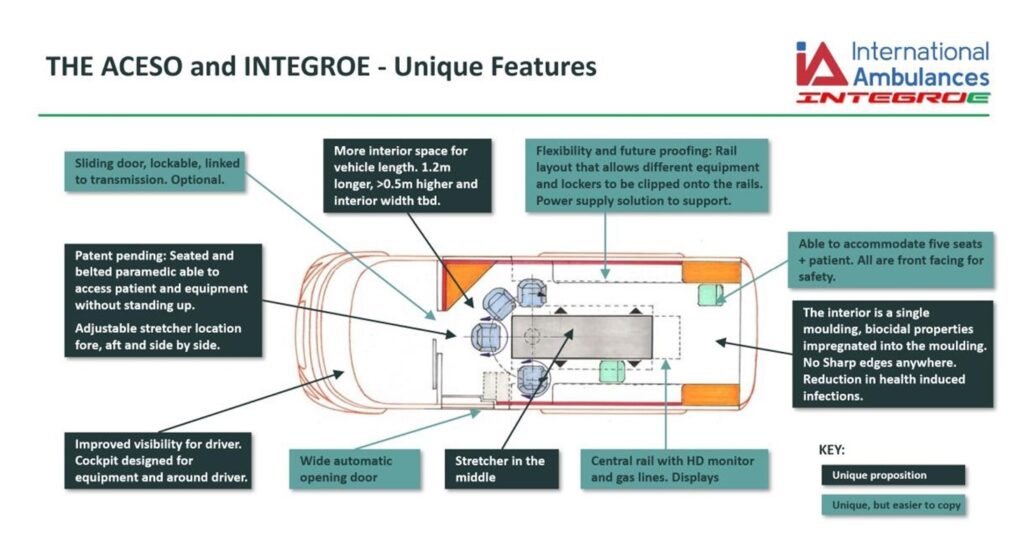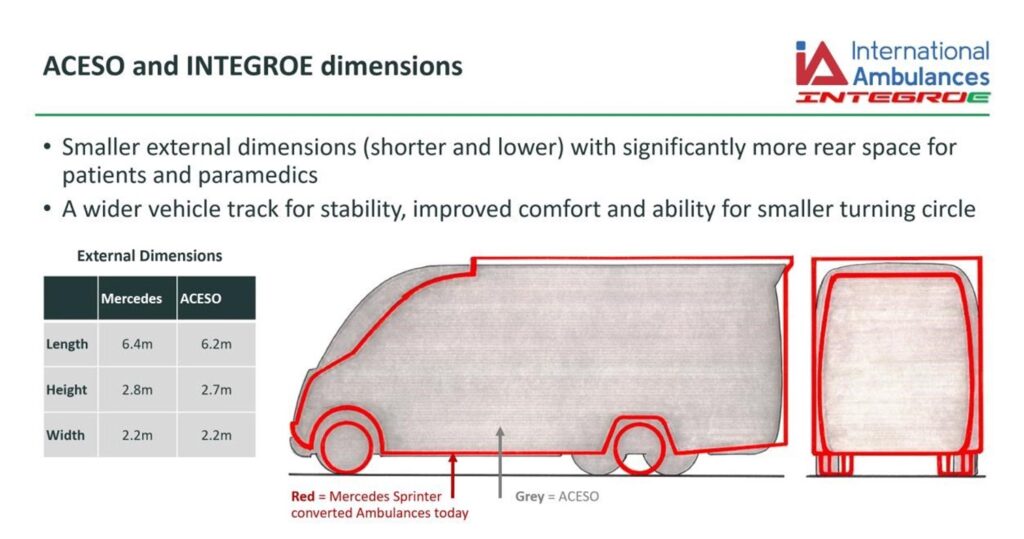
Here at International Ambulances we build bespoke ambulances with both the Aceso and Integro E the only purpose-built ambulances available today. Provisions for a battery electric vehicle variant under “Integro E” branding or options for multi-fuel combustion and battery hybrid vehicles under the “Aceso” brand. Both product offerings will be specified and completed in such a way to attain the required and advised ISO certifications as well as BS EN 1789:2020.
First and foremost, this is NOT a vehicle conversion but a bespoke build. All current ambulances today are based on a commercial vehicle chassis configuration from various vehicle manufacturers where there are many drawbacks to converting these to emergency patient-focused vehicles. See the below links below from a recent report highlighting some very serious and current issues:
https://www.bbc.co.uk/news/uk–england–cambridgeshire–61847310
Some of the many unique design and engineering benefits we offer:
Chassis:
The chassis is made of 4003 Stainless Steel that is manufactured with a small amount of chrome and carbon making it magnetic and guaranteed for 100 years against corrosion. It is formed from a 1.5 mm sheet that is folded into double “C” sections with a height of 295mm, plus an additional vertical section making it three verticals with eight 90-degree bends per chassis rail giving a world-leading torsional rigidity.
The depth of the chassis takes all the batteries that amount to four Audi E-tron cars worth. The chassis has always been a three-axle design, with the rear chassis now detachable / attachable as a non-articulated trailer. The double “V” (male / female) is hydraulically actuated to remove the trailer by pressing button number 2, pushing the ambulance off the trailer, then button number 3 is to remove the locking pin. You then back onto another charged trailer and reverse the procedure. You can be 33 degrees off a straight line because the double “V” is self-locating / aligning. The number three button hydraulically presses the locking pin in, then button number 2 pulls the trailer into its lock position. Button number 1 raises and lowers the hydraulic-operated tailgate. The whole procedure takes 4.1 minutes.
Suspension:
The ambulance runs an active air suspension system, enabling the ambulance to lean into bends like a motorbike, together with anti-dive and anti-squat geometry. This enables 100 % vertical gravity, meaning all occupants have no horizontal “G” force making it better than an aircraft. The front suspension has double wishbone suspension with Land Rover Discovery vertical air bags and shock absorbers with air ride height adjusters. The rear has four custom made stainless steel individual swing arm suspension units, each having its own airbag, and shock absorber air ride height adjusters. This system removes 90% of vertical movement into rolling movement, meaning when the mid axle goes over, say, a sleeping police bump, the airbag pumps the air into the rear axle air bag, then as the mid axle goes down (after the bump) the air comes back from the rear axle, raising the rear axle without the body moving vertically.
This system also allows the rear suspension to extract all the air from the rear axle and part from the mid axle to lower the rear of the ambulance to allow the stretcher to be just rolled in and out without a lift.
This creates a more stable platform for paramedics and the patient’s treatment. Our suspension is self-levelling for easy patient access, removing additional weight and the requirements for high maintenance tail lifts, whilst providing safe smooth transport for trauma & orthopaedic and spinal/neuro injuries. Ambulances today use leaf spring technology that has been around since the 1800s meaning the ride quality is severely compromised for a patient focused application.
This system also allows a very short turning circle for maneuvering in small areas because, by lifting the rear axle you have a short wheelbase.
Electric drive and Gearbox:
We are utilising an alternative battery technology to the available electric vehicles on the market today. This alternative battery chemistry allows us to produce battery packs with a much longer lifecycle, and more efficient charging standards, whilst having zero fire and explosion technology. With an ability to charge the Integro-E from 0-100% in under 20 minutes for over 800 miles of driving range, this cannot be seen in any available EV worldwide. The unique chemistry also negates the common impacts of environmental conditions that reduce EV range, such as overly high or low temperatures, we will be able to operate from -40oCup to +80oC.
Alongside the alternative battery technology being used, we have the ability to “hot-swap” 25% of the overall battery capacity which allows us to regain roughly 200 miles of range in under 5 minutes even if there isn’t a charger available, by providing swappable batteries distributed anywhere to be used exclusively by ambulances
Our specially designed electric motor is in four sections, the rear section is for the drive into our 7speed PDK gearbox and then into our own differential ( that has won the Le Mans race in the GT category 7 times). If you are driving at say 70 mph you will be in 7th gear, if you take your foot off the throttle at circa 25% the mid-two parts of the electric motor are generators that will recharge the batteries 100% that you have used to get to 70 mph, then to slow down more ( to save braking) by taking your foot off the throttle completely, the fourth part of the generators recharge the batteries at a greater rate than you used to get to 70 mph. However, because the distance is less than it took to get to 70 mph we can only recharge the batteries by 67% in total. Therefore, this recharge, recharges the front patent battery first, then the second, then the third with the removable trailer last. Therefore, the range will be a lot more than quoted subject to driver style.
In the last two months, we have installed three 3.5 metre X .35mm flush-fitting solar panels into the roof giving us 570 watts.



Body Interior:
The ambulances outside measurements of the body are shorter, narrower, and lower than any standard general ambulance, yet it has an interior patient area ceiling of 6 foot 10 inches, with an additional 1.3 meters longer interior than an existing ambulance. Every surface has a curved shape there are no sharp corners ( in 2019, 9000 hours were lost due to paramedics falling over and hurting themselves on these sharp worktop-type corners ) We have no need for paramedics to stand because we have a seat with a seat belt on a curved “U” shaped track to circle the patent on the stretcher that is in the centre of the patient area. There are now two tracks outside the aircraft-type ceiling lockers that have attached rotating brackets for the blood / air / x-ray equipment. The x-ray machine is fitted robotically for sterilisation. With four movement cameras and two oxygen/ Co2 sensors, when the paramedics leave the ambulance, the sensors prove there is nobody in the ambulance, so the doors lock and a red light comes on outside the driver’s door, then the x-ray machine goes down the ambulance interior going 360 degrees horizontal and 180 degrees vertical to 100% sterilise the interior in 3.4 minutes. The green light outside then comes on and the doors unlock.
There is a driver / patient area bulkhead, fitted with an acrylic bulletproof sliding door for paramedic security and safety. This also means the driver and any other paramedic do not have to get of out the ambulance to enter the patient area. This is a feature that the unions are looking to standardise in the UK market and is named a suicide door.
The driver’s department has two air-suspended seats (that are adjustable to the paramedics weight that can recline 30 degrees, raise and lower due to the size of the paramedic and now we are adding an electric pedal box that can be electrically switched back or forward to suit paramedics height. Two air conditioner units are fitted, one for the full driver’s area and the other for the patient area. The driver’s unit has a third area to cool cans and bottles of drink whilst there is a 12-volt kettle and mugs recessed in the dash. Dual Zone Air Conditioning is taken seriously, especially in extreme circumstances where temperatures of forty five degrees plus are reached. It is imperative to maintain a comfortable and safe climate within the ambulance for the patient(s) and crew. With the rear tailgate open an air blanket effect is formed with double the power of A/C to ensure minimal temperature disruption. Regarding battery consumption this is also supported by a backup from one of the additional three battery compartments as in total the ambulance has four, all with a part to play with the technology and engineering.

Outside body:
The body is an aerodynamic cab-forward design, with flush glass, where the blue lights and spotlights are fitted, making the outside 100% flush. The construction is fibreglass with core matt and Rohacell foam that is used on F1 cars. The body is then fitted with 10 stainless steed roll hoops, that are bonded to the body and welded to the chassis. There is then a mid-body bonded and then the interior body is bonded all together with a double foam insulation to stop heat transfer. The ambulance is IVA ( government type approval) approved.

Technology:
Advanced diagnostic support, such as onboard X-Ray and Ultrasound capabilities to review and address the patient pathway and effectively function as a remote consultation/treatment room to reduce avoidable conveyances to the Emergency Department.
Another application for an onboard X-Ray could be for Radiation Sanitisation. We are well aware of this could add additional training requirements for Paramedics however, it is only an option.
Digital Integration – to include 4G (Excel Dome) and satellite (Leo Satellite) connectivity with Excelerate to maintain communication with the Emergency Service Network even in the most challenging of terrains in line with digital transformation.
Advanced Telematics and remote monitoring with ACETECH, monitoring driver fatigue, driving behaviour data, RFID tracking for asset management and traceability, and Patient recording where incidents permit.
Power-assisted patient stretcher:
we make our stretcher out of 306 stainless steel guaranteed never to rust, an electric / hydraulic lift ram and motor, meaning it goes flat to 100mm off the floor and then can lift to 1.5 metres by pressing a button. The bed area is also narrow for thin people and the can be made wider for heavy people, again at a press of a button. Now the best part, it has two front wheels at 200 mm diameter fitted with 12 volt electric hub motors. This allows the stretcher to do 3 mph for 3 miles without a charge. Because of the off road tyre pattern, it will climb a pavement kerb stone, front door threshold, and drive over any chipping garden. It has two thumb controls on the rear frame ( handle bar) the right one makes the stretcher turn right at stretcher length and the left one turns left at stretchers length. Both together will go straight ahead, so is very easy to enter our ambulance. It will go up the biggest hill in the UK and can go very slowly ( if required, ) down hill. Take tour two thumbs off and the electric motors become brakes.
Our stretcher will NOT cost more than £10,000.
Overall:
We are happy to offer a 10-year warranty, although we are now considering a battery lease arrangement, so we can change them as the batteries are upgraded. The body and floor are made from competent materials meaning there is NO contact between paramedics/patients and the batteries.

These are just a few of the landmark changes included in our products to the current national specification document for the NHS, however, we can change our design to best suit the needs and wants of the ambulance services both within the UK and Internationally.